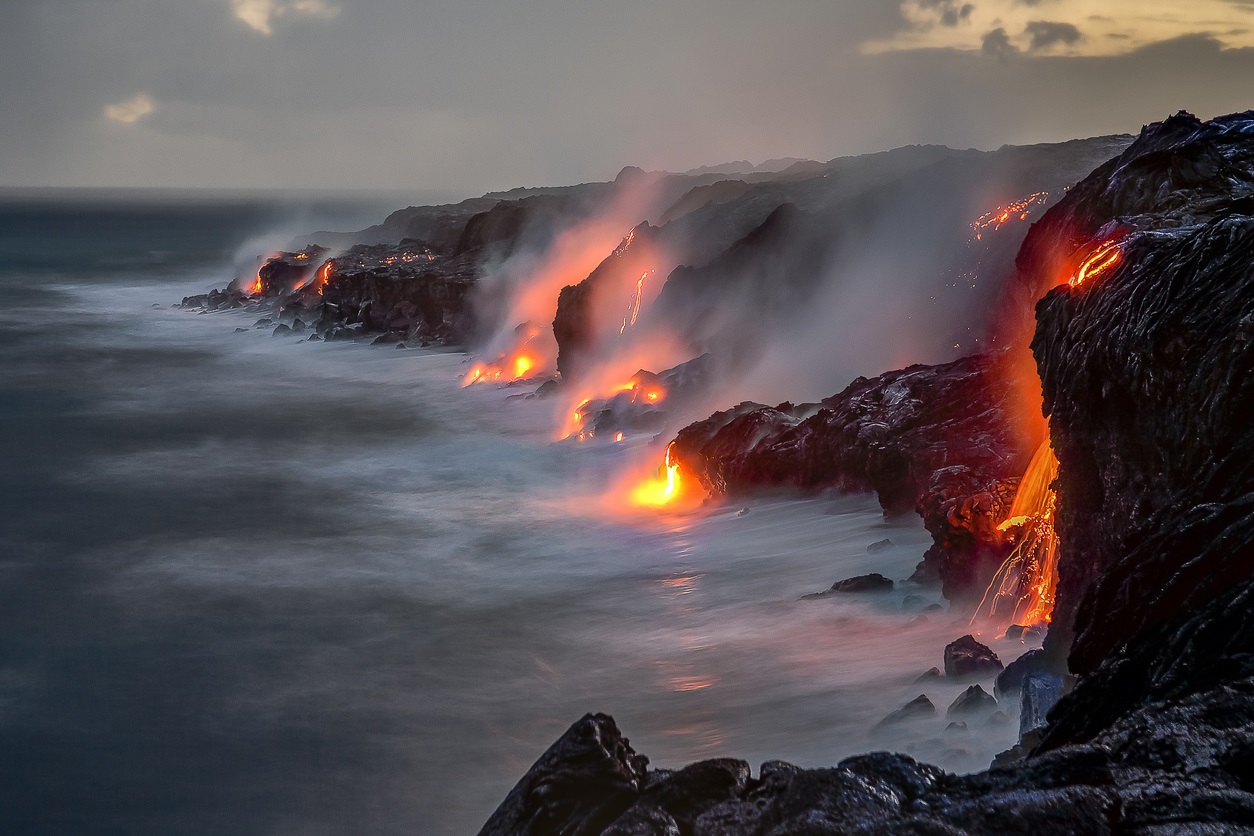Lesser Known Wine Countries: Unique Regions Producing Wine You May Not Have Heard About
As a wine connoisseur, you have probably visited some of the world’s most popular wine regions. Perhaps, you’ve spent some time in Tuscany, discovering the region’s world-renowned Chianti wines. Or maybe you’ve been to Bordeaux, which has a reputation for producing sumptuous reds. This might come as a surprise, but places like Madagascar, Hawaii, India, Japan, and Scotland also produce wines worth discovering.
If you’re interested in learning more about these places and the wines they make, we take a look at these obscure wine regions below.
Madagascar
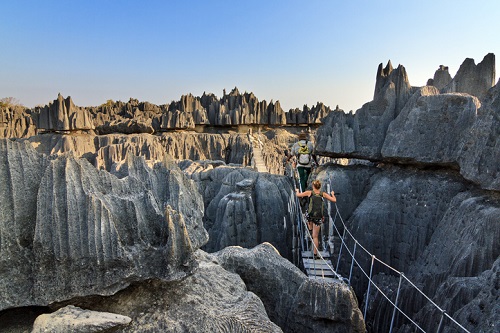
Madagascar is a massive island on the southeast coast of Africa. Given its location, you would not expect that the island is a wine-producing country. However, the French, who colonized the country during the 1800s, have left a strong winemaking legacy.
You’ll find hundreds of small vineyards around the island, each home to a few hectares of vines. These vineyards are slowly consolidating into bigger vineyards. However, very little wine is being exported from Madagascar to the US or Europe. Nowadays, Dzama rum is the island’s main alcoholic export and accounts for around 60% of the island’s alcohol market. These rums are being exported worldwide and have received numerous accolades and high praise from rum critics.
The Soavita Vineyards is one of those places to go on a wine tour in Madagascar. It’s located in a large town called Ambalavao. In addition to tasting fine wine, you can visit a small shop in Ambalavao where local women make artistic and decorative paper using raw wood pulp.
RELATED: 5 Day Maui Itinerary & Travel Guide: The Best Things To Do
Hawaii
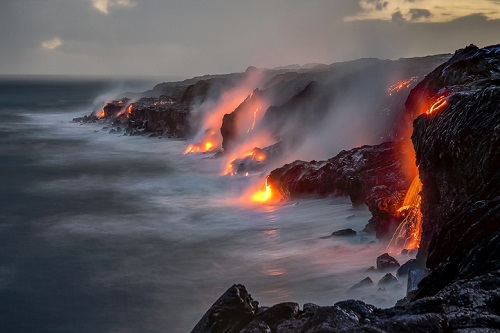
While Hawaii may be famous for its refreshing cocktails, especially the Mai Tai, wine also has its place. Five of the first American sommeliers who passed the Master Sommelier examination have lived in Hawaii and have established an enduring wine culture across the islands since the seventies.
While Hawaii is far from what many consider a wine country, the Hawaiian Islands boast a handful of homegrown wineries. From The Big Island to Oahu, Maui and Kauai, Hawaii is unique for its production of both traditional and fruit wines. Take for example Volcano Winery, which is situated at 4,000 feet in a purely volcanic terroir. They produce Pinot Noir and a variety of local fruit wines.
In Kauai, you’ll find excellent bars and wineries that cater to a growing demand for wine. Head to the town of Koloa, and you’ll find The Wine Shop, a family-owned shop selling an excellent assortment of wines to locals and visitors to the island.
When enjoying wine on Kauai, consider staying in a villa on the North Shore, close to the wine markets. The North Shore is also home to good wine bars, such as the Palate Wine Bar and Restaurant in Kilauea. It boasts an impressive collection of wine derived from esoteric wineries around the world.
India
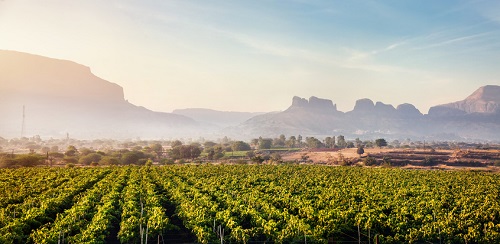
India is famous for many things but not wine. However, many didn’t know that the country has an age-old history with wines. Winemaking in the country started during the Mughal rule some 5,000 years ago. Nowadays, the country is home to some of the world’s finest vineyards, with some offering visitors the opportunity to go on a wine tour.
Sula Vineyards, a winery and vineyard located in the Nashik region of Maharashtra, is one of the pioneers in winemaking in India. Every year, Sula Vineyards offer wine connoisseurs the opportunity to savor the taste of an eclectic variety of local wines. Sulafest has become one of India’s most sought-after wine festivals, with wine lovers calling it the “Mecca of Wines.” At this event, thousands of party people will be treated to a mix of groovy music and wine. It’s the perfect event to satisfy the cravings of every wine lover.
Sula Vineyards is a world-class winery and a popular destination for wine connoisseurs in India. Aside from the exquisite wine parties and the various wine offerings, Sula Vineyards offers much more. It’s also home to an Italian restaurant run by award-winning chefs. There’s also a luxury three-bedroom bungalow where guests can spend the night.
Japan
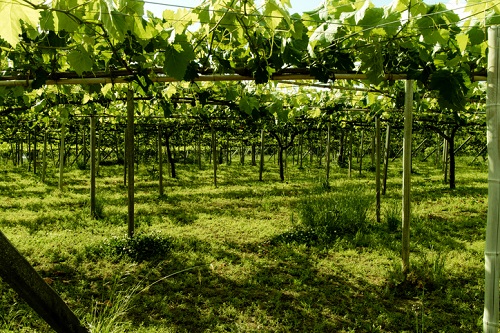
While Japan is not known for its wine production to many westerners, centuries of European influence have created wine regions around the country since the late 1800s. Vineyards all over the country have been cultivating wine for over a century with a hint of French influence.
RELATED: Learn All About Japanese Wine & Wine Regions
Many wineries and vineyards in Japan are in the north near Hokkaido and in the south around Miyazaki. However, the main wine industry of Japan originated in Yamanashi, just north of Mount Fuji, where the region produces its own local Koshu grapes and some traditional wine varieties. Nowadays, the Yamanashi region accounts for 40% of the country’s wine production, with over eighty wineries in the area. The country as a whole produces delectable wines from grapes like Chardonnay, Riesling, Merlot, and Cabernet. Its own Koshu wine has also gained popularity all over Asia and is an ideal pairing for many variations of Japanese cuisine.
Going on wine tours and tastings is the best way to learn more about Japanese wines. Most wineries in Japan offer tours in both Japanese and English, where you’ll be walking through the vineyards and wine facilities to see for yourself how the wines in these regions differ from the rest of the world.
RELATED: Pairing Wines With Asian Food: Top Sommeliers Discuss Their Favorites
Scotland

Wine is probably the last thing on your mind when going to Scotland. The country is famous for its breathtaking landscapes, ruined castles, and cozy pubs where you can sample the tastiest scotch whisky, but not much is known about its wine. But some brave entrepreneurs and forward-thinking locals have taken it upon themselves to establish what may eventually become a blossoming wine country.
RELATED: The Best Scotch Whisky Distilleries to Visit in Scotland
Both wine novices and professionals alike have typically figured that Scotland’s weather is too fickle and cold to successfully yield wine. However, at the time of this writing, there are several wineries experimenting with vitis vinifera grapes as well as fruit-based wines. While the climate in Scotland may not currently be suitable for a full 100 days of grape ripening, winemakers are forecasting that global warming will eventually and literally, bear more fruit. If you decide to visit Scotland and want to see how things are progressing, look into Cairn O’ Mohr, Moniack Castle Winery, Orkney Wine Company, whose current focus is fruit wines.
Located in Fife, just north of Edinburgh, Chateau Largo is probably the most famous winery in Scotland. It’s the brainchild of a local chef and food writer who dreams of bringing wine to Scotland. Château Hebrides is another winery that’s worth checking out in Scotland. Specializing in Black Muscat wine, the winery is located in the Outer Hebrides. Although sold only at local farmer’s markets, the wine from Chateau Hebrides has a reputation for being quite tasty.
To make the most of your wine tour in Scotland, consider booking into some of the unique hotels Scotland has to offer, for a few nights. In between tasting wines, explore Scotland’s attractions, such as the Edinburgh Castle, St Giles Cathedral, and the Royal Botanic Garden in Edinburgh.
More Things to Do in Scotland
Lebanon
Lebanon might not be the first country that springs to mind when discussing wine, yet its ancient winemaking history dates back to the Phoenicians, who were among the first to cultivate vineyards and trade wine across the Mediterranean. Today, the Bekaa Valley stands out as Lebanon’s prime wine-producing region, benefiting from a unique climate with long, warm summers and the cool breezes of the nearby mountains.
RELATED: Learn More About Lebanon As a Wine Producing Country
Renowned for its robust red wines and increasingly celebrated for its whites and rosés, Lebanon’s wine scene has seen a resurgence. Château Musar, perhaps the most internationally recognized Lebanese winery, offers wines with a distinct character, often described as having a Bordeaux-like quality but with a unique Middle Eastern twist. Visiting their vineyards, located just outside Beirut, provides not only an insight into their winemaking process but also a historical perspective on the region’s viticultural heritage.
For those venturing into the heart of Lebanon’s wine country, the wineries like Château Ksara and Château Kefraya also offer extensive tours and tastings. Each winery has its charm, combining modern techniques with traditional methods passed down through generations. The experience is complemented by the surrounding landscapes, which provide a picturesque backdrop perfect for leisurely exploring the culinary and cultural offerings of the region.
Uruguay
Tucked between Argentina and Brazil, Uruguay is a hidden gem in South American wine production, primarily known for its Tannat wines—a deep, dark red that’s rich in antioxidants. The coastal region of Canelones, near the capital Montevideo, hosts the majority of the vineyards, where the maritime climate plays a crucial role in the grape’s growth cycle, lending these wines a complex structure and robust tannins.
Uruguayan Tannat is distinct from its French counterpart, often being softer and more approachable due to the milder climate and innovative winemaking techniques adopted by local vintners. Bodega Garzón, a relatively new but already highly acclaimed winery, has been instrumental in putting Uruguay on the global wine map. Their state-of-the-art facility not only focuses on sustainability but also offers a range of experiences from vineyard tours to gourmet dining, showcasing the best of Uruguayan produce.
As wine tourism in Uruguay continues to develop, visitors can enjoy a variety of activities including horseback riding through vineyards, wine spa treatments, and even participating in the harvest. The intimate scale of many Uruguayan wineries offers a personal touch, often with the winemaker themselves leading tastings and discussing their craft.
Thailand
Thailand may be famous for its exotic beaches and vibrant street food, but its burgeoning wine scene is attracting attention. The country’s tropical climate might seem unsuitable for traditional winemaking, yet pioneering vineyards in the Khao Yai region, just a few hours from Bangkok, are producing quality wines that defy expectations. The altitude and microclimates in this area allow for the cultivation of various grape varieties including Syrah, Chenin Blanc, and even Tempranillo.
GranMonte Vineyard and Winery is a family-run estate at the forefront of Thai wine production, offering award-winning wines that capture the essence of their unique terroir. The vineyard not only practices sustainable viticulture but also invites visitors to engage in the winemaking process through educational tours and tastings. Their annual harvest festival is a must-visit event, offering a blend of local culture and winemaking excellence.
Thai wines are characterized by their fruity aromas and adaptability in pairing with the wide range of Thai cuisine, challenging the norms of wine pairing. As the Thai wine industry grows, more vineyards are opening their doors to tourists, offering a combination of winery tours, exquisite dining options, and even accommodations to transform a visit into a serene retreat.
Slovenia
Tucked away among Italy, Austria, Hungary, and Croatia, Slovenia is Europe’s unsung wine destination, with a winemaking history that dates back to the Celtic and Roman times. The country’s diverse landscapes provide a variety of terroirs, with wine regions from the sun-drenched Mediterranean coast to the Alpine influenced north. Slovenian wines, particularly those from the regions of Primorska and Posavje, are gaining international acclaim for their quality and unique characteristics.
RELATED: 3 Day Itinerary: Bled, Slovenia for Adventurous Wine Lovers
One of the stars of Slovenia’s wine scene is the indigenous variety, Rebula, known for producing crisp, aromatic whites that are perfect for summer sipping. Wineries like Movia and Marjan Simčič, located in the picturesque Vipava Valley and Goriška Brda, respectively, not only showcase these excellent wines but also offer in-depth tours and tastings conducted by the winemakers themselves.
Slovenia’s commitment to organic and biodynamic winemaking practices has set it apart in the European wine scene. The picturesque landscapes and the small-scale, family-owned wineries create a charming and intimate wine touring experience. Slovenia is ideal for those seeking a road less traveled, filled with stunning vistas, welcoming vintners, and outstanding wines that reflect the rich, diverse soils of this small, yet mighty wine-producing nation.
Georgia
Georgia claims one of the oldest winemaking histories in the world, with archeological evidence suggesting that wine production has been ongoing for over 8,000 years. Situated at the crossroads of Europe and Asia, this small country offers a vast array of native grape varieties, many of which are not found anywhere else in the world. The traditional Georgian winemaking method, using qvevri—large earthenware pots buried underground—has been recognized by UNESCO as a significant cultural heritage practice.
Georgian wine regions like Kakheti, the heartland of winemaking in the country, offer a fascinating glimpse into both ancient and modern viticultural techniques. Wineries such as Pheasant’s Tears and Alaverdi Monastery produce wines with deep roots in tradition, often with the winemakers eager to share their stories and the history behind each bottle. These wines are typically characterized by their depth of flavor and distinctive texture, making them highly sought after in the natural wine scene.
For wine enthusiasts looking to immerse themselves fully in the culture, many Georgian wineries offer guesthouse accommodations, allowing visitors to live amongst the vineyards and participate in daily winemaking activities. The local hospitality, combined with a rich gastronomic tradition, ensures that a wine tour in Georgia is an unforgettable blend of culinary delight, cultural exploration, and oenological discovery.
Frequently Asked Questions about Lesser Known Wine Producing Countries
There are several obscure wine regions around the world that are worth exploring, including Madagascar, Hawaii, India, Japan, and Scotland.
Madagascar is one such region that has only recently started producing wine. The country’s hot and humid climate makes it a challenging location for viticulture, but it’s also what makes the wines unique.
Hawaii, on the other hand, has a long history of winemaking, but it remains largely unknown. The volcanic soils and tropical climate of Hawaii’s Big Island make it an exciting place for wine production.
In India, wine production is relatively new, but the country has a long history of winemaking dating back to the time of the ancient Indus Valley civilization. India’s vineyards are located mainly in the south of the country, where the climate is warm and humid.
Japanese wines are also gaining popularity, especially those made with Koshu, the country’s indigenous grape variety. The grapes are grown in the Yamanashi region, which is surrounded by mountains and enjoys a unique climate.
Finally, Scotland may seem like an unlikely place to produce wine, but there are a few vineyards in the country that are worth exploring. The wines produced here are often made with hybrid grape varieties that can withstand Scotland’s cold and wet climate. These regions may not be as well-known as some of the more established wine regions, but they offer a unique taste of the local terroir and are definitely worth exploring for Winetravelers.
The grape varieties commonly grown in these lesser-known wine regions vary depending on the region’s climate, soil, and winemaking traditions.
In Madagascar, for example, the grape varieties grown are often hybrids that are more suited to the hot and humid climate. Some of the common grape varieties grown here include Chambourcin, Muscat, and Cabernet Sauvignon.
In Hawaii, the grape varieties grown are also hybrids, which can withstand the volcanic soils and tropical climate. Some of the common grape varieties grown here include Symphony, Cayuga, and Chambourcin.
In India, the grape varieties grown are mostly international varieties like Cabernet Sauvignon, Chardonnay, and Sauvignon Blanc. However, there are also some local varieties like Bangalore Blue, Arkavathi, and Krishna Valley that are gaining popularity.
In Japan, the grape variety that is most commonly grown is Koshu, which is a white grape variety that is indigenous to the Yamanashi region. The grape is well-suited to the region’s unique climate and produces wines that are light and refreshing.
In Scotland, the grape varieties grown are often hybrids that can withstand the country’s cold and wet climate. Some of the common grape varieties grown here include Rondo, Regent, and Solaris. These grape varieties produce wines that are unique to the region and offer a taste of Scotland’s terroir.
One of the most significant challenges faced by winemakers in these regions is the climate. For example, in Madagascar, the hot and humid climate can make it challenging to grow grapes that produce high-quality wine. Similarly, Hawaii’s tropical climate can be challenging for winemakers, and they must work hard to keep the vines healthy and free from pests and diseases.
Another challenge faced by winemakers in these regions is the lack of infrastructure and resources. For example, in India, the wine industry is still in its early stages, and many winemakers face challenges such as a lack of skilled labor, inadequate storage facilities, and limited access to quality equipment.
In Japan, winemakers face challenges such as limited land availability, which makes it challenging to expand production. Additionally, Japan’s unique climate can make it difficult to grow grape varieties that produce high-quality wine.
In Scotland, the cold and wet climate can be a significant challenge for winemakers. The grapes grown in Scotland are often hybrids that can withstand the climate, but even so, winemakers must work hard to produce high-quality wines.
Finding wines from these lesser-known regions can be challenging, as they are often produced in small quantities and are not widely distributed. However, there are some specialty wine shops and online retailers that carry wines from these regions. You may also be able to find these wines by visiting local wineries or contacting the winemakers directly.
As for affordability, wines from these regions can vary in price, but they are generally more affordable compared to wines from more well-known regions. This is partly due to the fact that the production costs are often lower in these regions, and the wines are not as in demand as those from more established regions.
However, it’s worth noting that the quality of the wine is not necessarily correlated with its price. Many wines from these lesser-known regions are of high quality and offer excellent value for money. Additionally, by exploring these lesser-known regions, you may discover unique and exciting wines that you would not have otherwise encountered. This is why we’re talking about this subject on Winetraveler.com. :).
Dive Deeper into the World of Gastronomic Travel
Here’s Why You Should Visit Tarragona: Spain’s Ancient Port on the Mediterranean
Chianti Itinerary: How To Spend 5 Days in Italy’s Chianti Region
10 Charming Italian Towns To Visit if You Love Food and Wine
8 Immersive Things to Do on the Island of Madeira in Portugal
Cinque Terre Italy Itinerary: Travel Guide For Wine Lovers
You are reading “5 Unexpected Places You Didn’t Know Produce Wine” Back To Top
obscure wine regions, wineries in Scotland, wine regions in India, unexpected wine-producing countries: fun weird facts about wine
If you enjoyed this guide, consider joining the Facebook Group to interact with other Winetravelers and for travel inspiration around the world, and be sure to follow along with us on Instagram.
